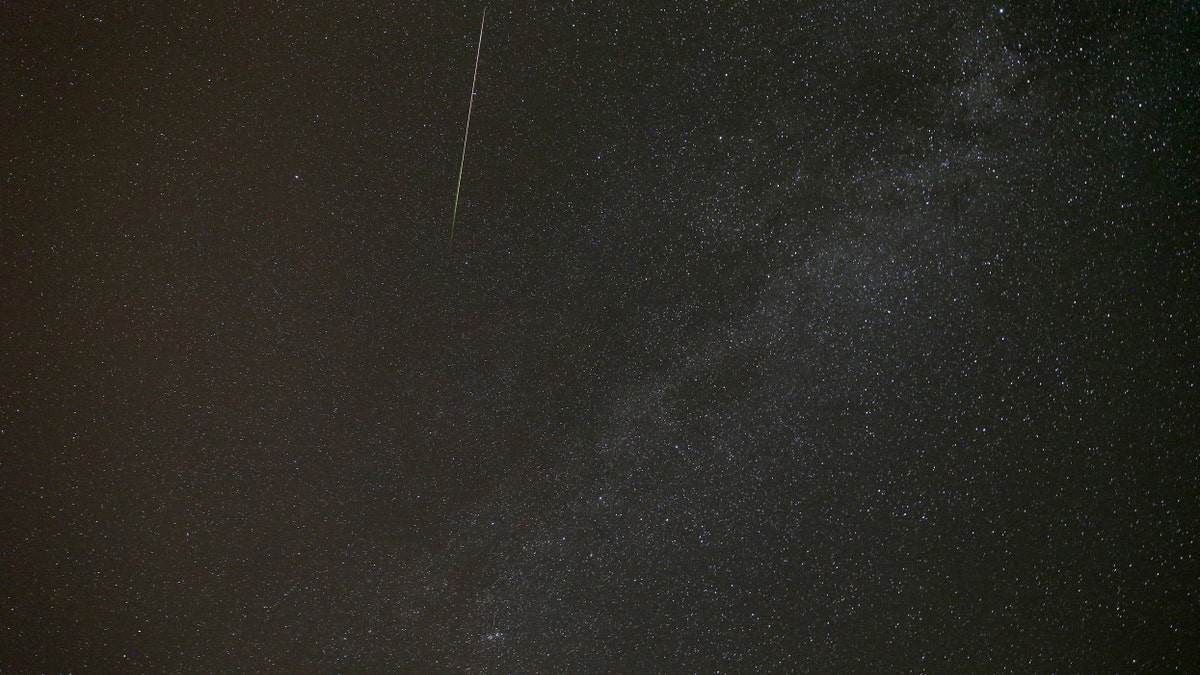
File photo - A meteor streaks across the sky during the Perseid meteor shower near the village of Malashki, north of Minsk, Belarus, in the early morning Aug. 13, 2015. (REUTERS/Vasily Fedosenko)
Tonight is the night to catch a glimpse of a shooting star.
The rare opportunity for skywatchers comes Thursday and Friday with the annual Draconid meteor shower, which is caused by the remains of a comet raining down on Earth.
If the skies are clear, the Draconid meteor shower will be seen radiating out of the constellation Draco (the Dragon) near the triangle formed by the stars Deneb, Altair and Vega. NASA estimates that, on average, about 10 to 20 meteors per hour will be visible during the Draconids.
Related: Supermoon lunar eclipse in pictures
It should be excellent viewing, according to EarthSky.org, due to the fact that the moon will be just a faint crescent. EarthSky.org says the best time to see the shower is at nightfall, rather than the pre-dawn hours, and the best viewing direction is due north.
While the Draconids appear to be coming from the constellation Draco, they are actually a result of Earth colliding with debris shed by Comet 21P/Giacobini-Zinner, which orbits the sun once every 6.5 years.
Celestial dynamicists would expect the planet’s powerful gravity to scatter anything in its vicinity into varying and unpredictable orbit, according to NASA. But they believe that a stream of particles, ejected in 1900, is still largely intact.
Related: Stunning Perseid meteor shower pictures
To watch the meteor shower, you don’t need any special equipment. Just grab a coat, step outside and start scanning the skies in the United States, Europe or Canada.
It also helps to pick a viewing spot far from city lights, since that can reduce the numbers of meteors that you might see. Binoculars or telescopes are not of much use because meteors travel unpredictably and typically only last a couple of seconds.
And while the meteor shower will put on a good show, it’s unlikely any will reach the ground. Particles from Draconids aren’t big enough and probably will burn up high in the atmosphere.
In August, stargazers in the northern hemisphere enjoyed the oldest meteor shower known to Earth. The annual Perseid shower occurs when pieces of comet Swift-Tuttle hit Earth's atmosphere at more than 133,000 mph and burn up.
